Affiliate disclosure: This post may contain affiliate links. Please see our Privacy Policy.
Traditional Cultured Mozzarella is a rare gem in the world of home cheesemaking—a slow, patient process that uses natural cultures instead of added acid. Unlike quick 30-minute versions, this old-fashioned method develops rich, complex flavor you just can’t get any other way. If you’ve ever wanted to taste mozzarella the way it was meant to be, this is it.
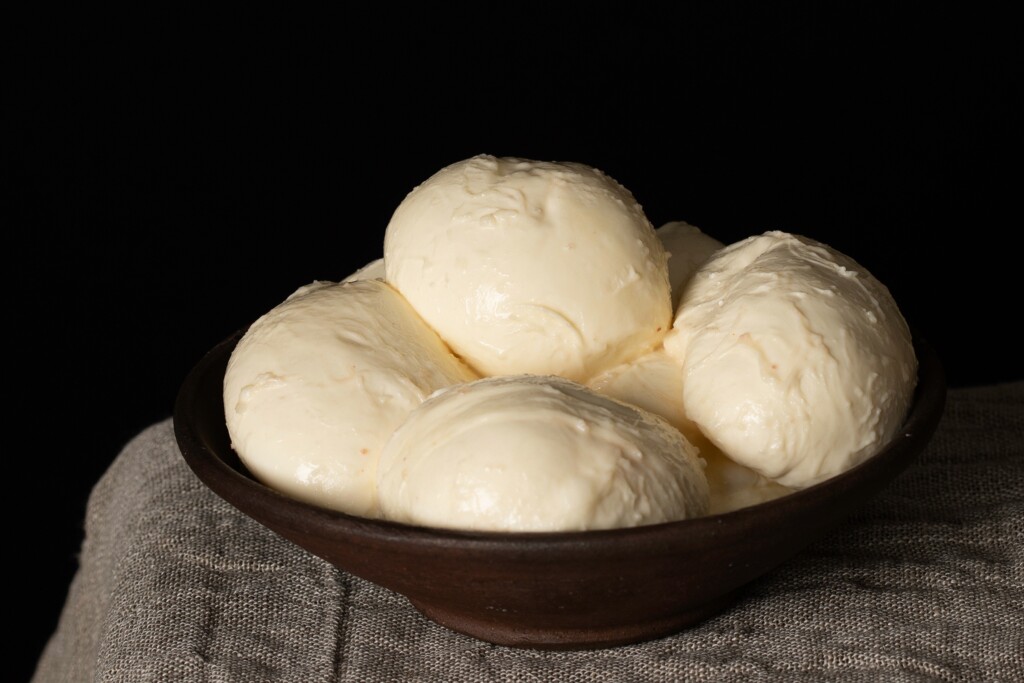
Mozzarella might be one of the easiest cheeses to make at home—if you’re taking shortcuts. Most modern recipes are “30-minute mozzarella” made with vinegar or citric acid, and some even call for the microwave. Quick versions are great for beginners, and I’ve made plenty of them over the years. But if you’ve ever wondered what mozzarella used to taste like—before convenience took over—you’ll need to go back to the old ways.
Traditional cultured mozzarella is a completely different experience. Instead of acidifying the milk with vinegar, you use a natural starter culture and give the curd time to develop its stretch. The result is a cheese with a deeper, more complex flavor that no grocery store ball of mozzarella can touch. It’s one of those things you simply cannot buy anymore—if you want to taste it, you have to make it yourself.
We’ve made this style of mozzarella a dozen or so times over the years using a recipe I stumbled across in an old cheesemaking guide, and every time, I’m amazed at how different it is from the quick stuff. So when David Asher published a fully fleshed-out traditional mozzarella recipe in his latest book, Milk Into Cheese, I was thrilled—and even more thrilled when he and Chelsea Green Publishing graciously allowed me to share it here.
His book is full of traditional methods, often using natural cultures as they would have back in the day. (Though there are also adaptations for using modern cultures too.)
This method takes time, patience, and a bit of a learning curve, but it’s absolutely worth it. If you’re already making homemade cheese or looking to level up your cheesemaking game, this is a great challenge.
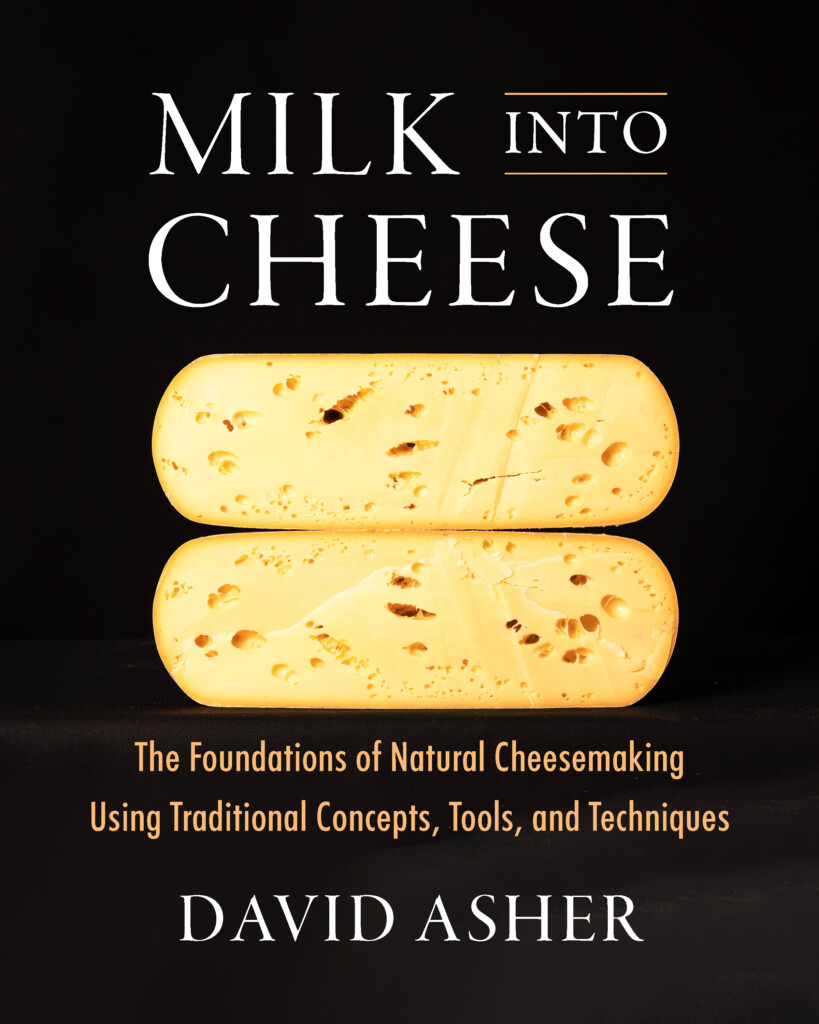
The following extract is from David Asher’s new book Milk Into Cheese (Chelsea Green Publishing, July 2024) and is reprinted with permission from the publisher.
How to Make Cultured Mozzarella
A first pasta filata, or spun-curd, cheese, mozzarella is made by melting curds that have been fermented to just the right degree so that they spin fibers when submerged in hot water. And it’s just one of dozens of different pasta filata cheeses made in Italy and around the world that are all extraordinary elaborations of this most manipulable form of milk.
To prepare mozzarella, make a rennet cheese as usual from the freshest, least processed milk, but with a thermophilic starter. Cut the curd and stir lightly to firm, then leave it to ferment beneath warm whey until its curd spins fibers when submerged in very hot water. Test a small piece of curd for stretch every half hour or so while it is fermenting so that you don’t miss the pasta filata stretching window.
Once the curd begins to show signs of stretch you will want to quickly prepare for the mozzarella making
Bring water to a boil, and prepare the cold-water bath and light salt brine. When the cheese achieves its full stretch, ladle the hot water over the curd in a melting vat a couple of ladles-ful at a time, stirring the curd gently between additions, until it melts into a stretchy mass. Do not add too much hot water too quickly, as the curd can overcook and be difficult to handle.
Once it’s melted, gather together the curd with the help of a wooden spoon or paddle (steel sticks to melted curd) and lightly knead it to help work the melted cheese and develop its strength. Though the melting water is hot enough to burn, the curd should be just cool enough to touch and shape. Having a bowl of cold water handy to plunge your hands into helps with the high temperatures, as does using a wooden spoon to retrieve the curd from the hot water.
Forming Homemade Mozzarella
I’ll do my best to describe the method of mozzarella’s forming here.
To start the process, lift the curd slightly out of the water with a wooden spoon and pull a lump of melted cheese from the mass of curd with your left hand (switch everything around if you’re a leftie).
Grab the curd with your right hand and pull it with your left one into a short length before folding it back onto itself accordion-like. Now stretch the curd in your left hand over the accordion with both hands to make a ball containing it all.
Break this from the mass of curd between the thumb and first finger of your right hand with a very tight squeeze, while supporting it with the left.
With your left hand, toss the mozzarella into the cold-water bath to cool and firm, before submerging it in the light salt brine to preserve.
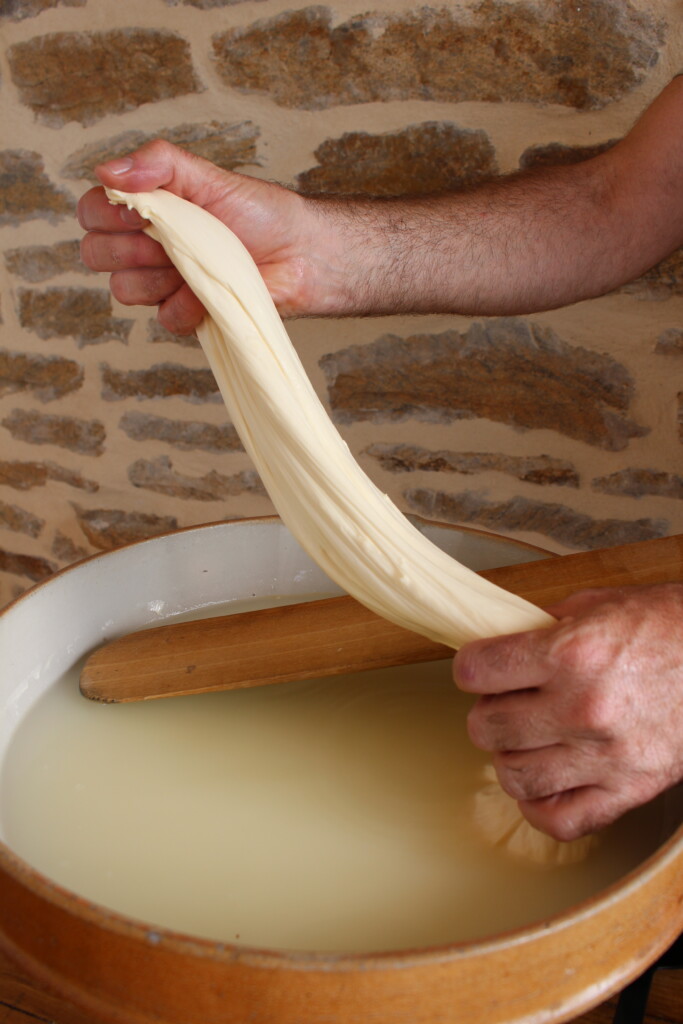
Shaping Homemade Mozzarella
It is best to work in a fluid fashion, keeping the curd in your hands so that you never have to retrieve the working end from the hot water in the melting vat. As you tear the mozzarella from the mass with your right hand, hold on to the torn end of the curd with that hand as the left hand takes the mozzarella and transfers it to the cold-water bath. This way, the working end of the curd is ready for the next tearing, and is transferred to your left hand before being pulled again into the next mozzarella by your right. As such the entire mass of curd can be spun into balls of mozzarella, one after the other after the other, until all the curd in the vat is used.
The name mozzarella derives from the Italian mozzare, to tear.
Other shapes that are made with the spinning dough in Italy include: nodini, little knots, a pulled length of curd tied into a knot before being torn; bocconcini, little mouthfuls, small balls of mozzarella; zizzona, mozzarella made into a massive breast; scamorza, mozzarella shaped into little gourds to be hung for smoking; and treccia, a three-strand braid. It’s even been known to be braided into elaborate shawls for festivals! Burrata and stracciatella are also made with a variation on this method, enriching the pasta filata cheese with cream (that’s stracciatella) before encasing it with stretched curd into a dumpling (burrata).
And a number of braided cheeses from Eastern Europe and the Middle East—often smoked and eaten in bars as beer cheese—are prepared by pulling the curd in hot water until it achieves a small fiber, then collecting the yarn-like curd and twisting it into a skein before smoking the salty cheese.
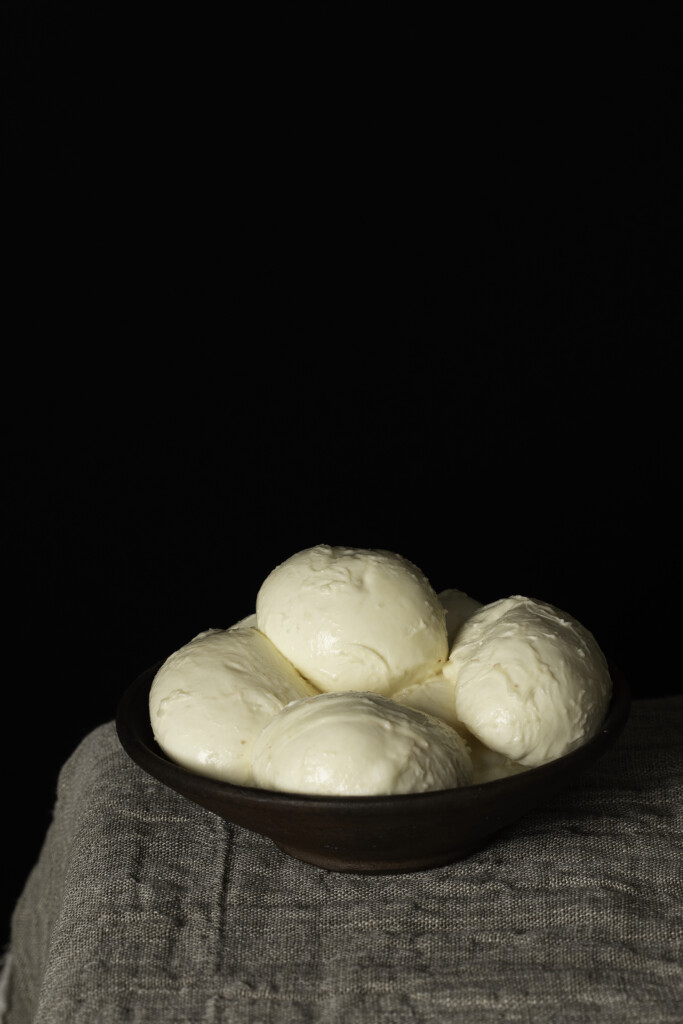
Choosing Milk for Cultured Mozzarella
A most delicious and succulent fresh cheese, mozzarella can be prepared year-round with the milk of any animal.
However, this method, along with the other pasta filata cheeses, works best with buffalo or cow’s milk; if you’re using goat’s or sheep’s milk, the stretch and workability of the curd won’t be as developed, and it’s harder to judge when the curd is ready to melt. For an improved stretch, consider blending these milks 50–50 with cow, as is often done for caciocavallo. Buffalo is considered best for the mozzarella technique, but a cow’s milk mozzarella made using traditional methods, sweet and golden from its cream, will leave you questioning this reasoning (it may just be that water buffalo are more common in the swampy environs of Naples, the ancestral home of both mozzarella and pizza!). If you are using the milk of buffalo, though, be sure to handle the curds more lightly, barely stirring, if at all, and expect a roughly doubled yield—that’s the big benefit of buffalo!
Culturing Mozzarella
This technique calls for making mozzarella slowly, with a mesophilic fermentation (using a mesophilic starter, like clabber) and a fermentation at lower temperatures, 30°C (86°F), developing its stretch within 6 to 8 hours.
A faster, more thermophilic mozzarella (made with a thermophilic starter, like yogurt, fermented at 40°C [105°F], and ready in about 3 hours total) can be made instead. The thermophilic mozzarella retains more sweetness due to the straight lactic acid fermentation, but the mesophilic mozza develops more flavor in its flesh from a fuller heterofermentation (there’s less lactose resulting when the more diversely fermented cheese reaches a pH of 5.3).
You decide what works for you. And any pasta filata style can be prepared with either approach.
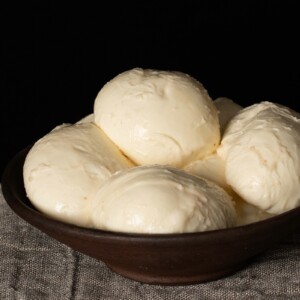
Traditional Cultured Mozzarella
Equipment
- Stockpot
Ingredients
- 2 1/2 gallons Whole Milk, 10 Liters
- 100 ml starter, clabber, kefir, or whey (1:100), or 1 packet mesophilic starter powder
- 3/4 tsp liquid rennet
- 1 tbsp salt
Instructions
- Bring milk to cheese temperature, about 35°C (95°F).
- Add starter, mix in thoroughly.
- Add rennet, mix in thoroughly.
- Wait for clean break, 45 minutes to 1 hour. Cover the pot to keep in warmth.
- Cut curd to walnut size, 1 inch or 2.5 cm. Cut vertically; cut crosswise; cut horizontally or diagonally.
- Stir curds gently over 5 to 10 minutes.
- Ferment curds under whey at ambient temperature until acidity develops. Goal pH 5.3—stretch test spins. Mozzarella usually takes 6 to 8 hours total to develop its stretch. If the temperature of the curds drops below 30°C (86°F), gently warm curds back up.
- Prepare for mozzarella stretching as curd shows first signs of stretching.
- Bring 5 quarts (about 5 Liters) water to a boil (half as much water as milk).
- Also prepare a 5 quarts (about 5 Liters) cold-water bath.
- Prepare a light salt brine with 2 quarts cold water and 1 Tablespoon salt (brine should taste good!).
- Strain the curds from the whey.
- Pour almost-boiling water over curds until curds melt evenly. Add hot water slowly, stirring curds gently between additions. Add more hot water as needed, but do not overcook.
- Gently bring curds together into a single mass under the water. Shape curds into mozzarella.
- Stretch a handful of curd from the mass into a 6 inch or 15 cm rope.
- Fold rope into an accordion (or roll into a stout pinwheel). Stretch top part of the cheese over the accordion to make a ball. Tear mozzarella off the mass between thumb and forefinger.
- Plunge mozzarella into cold-water bath. Leave in water until cool.
- Transfer mozzarella to light salt brine and refrigerate to preserve.
Notes
Recipe Timing
Total Time: About 7 to 10 hours, mostly hands-off during fermentation.- Warm & Inoculate Milk: 10 minutes
- Coagulation (Clean Break): 45 minutes to 1 hour
- Cut & Stir Curds: 10 minutes
- Fermentation Under Whey: 6 to 8 hours (until curd stretches at ~pH 5.3)
- Stretch & Shape: 20 to 30 minutes
- Cool & Brine: 30 minutes
Nutrition
Nutrition information is automatically calculated, so should only be used as an approximation.
Cheesemaking Recipes
If you’re ready to explore beyond mozzarella, we’ve got a full lineup of traditional cheesemaking recipes to try. Start with Farmer’s Cheese for a simple, fresh option that’s great for beginners—no special cultures required. Move on to Cultured Buttermilk, which doubles as a handy ingredient and a starter for other recipes.
Looking for aged cheeses? Cheddar Cheese and Colby Cheese both offer classic flavor profiles, with Colby being slightly milder and quicker to age. For something rich and spreadable, our Crème Fraîche is an easy cultured cream that adds depth to both sweet and savory recipes. And if you want to put that cultured cream to good use, don’t miss our method for Cultured Butter—it’s tangy, luscious, and far superior to anything store-bought.
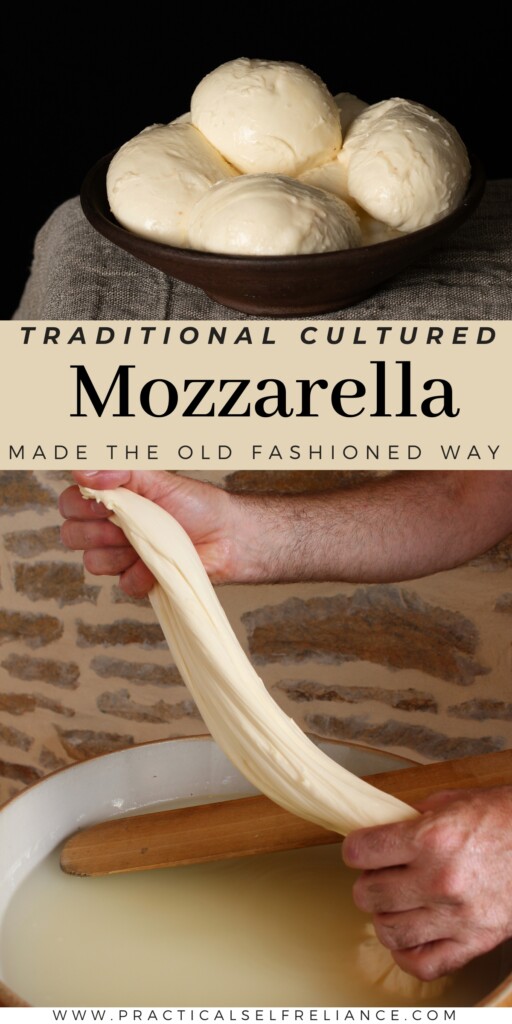
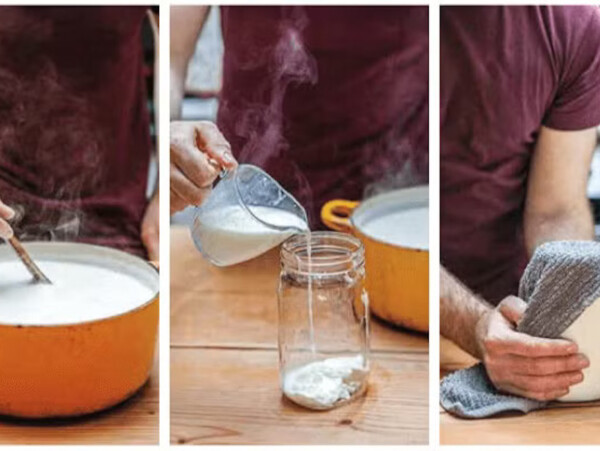
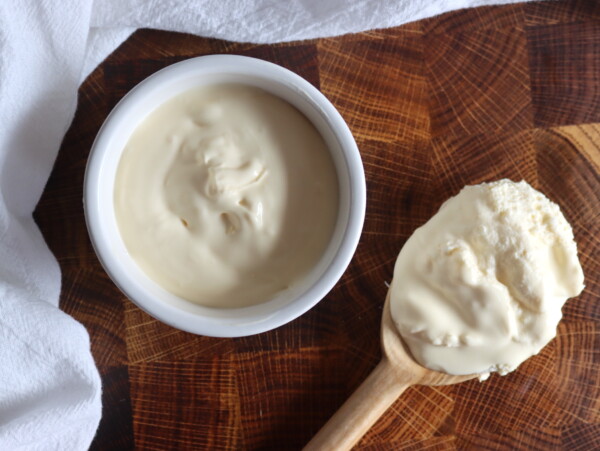
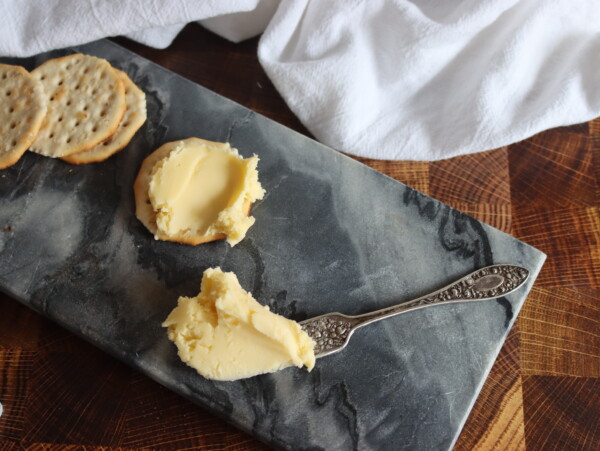
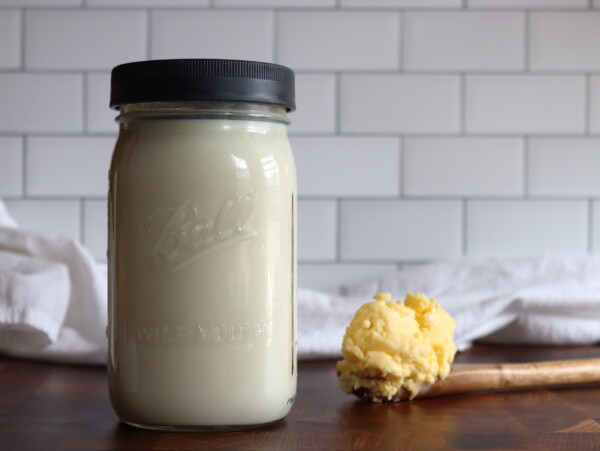
Hello! Could I use the whey leftover from making this mozzarella to make ricotta?
Yes indeed!